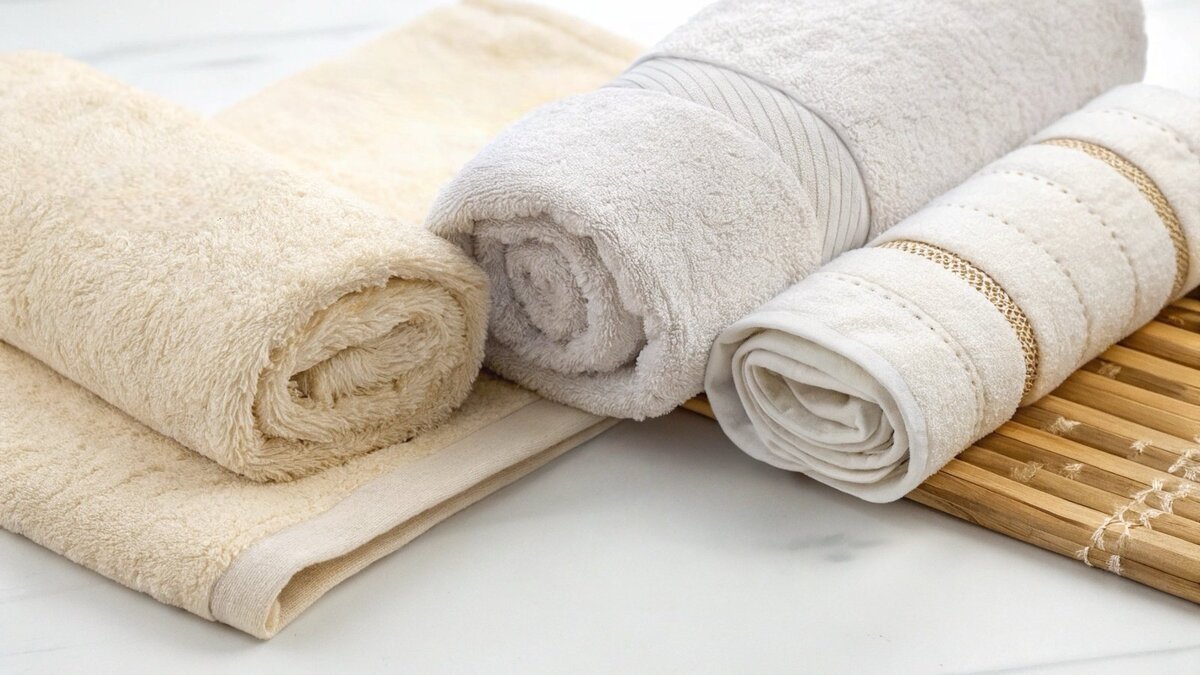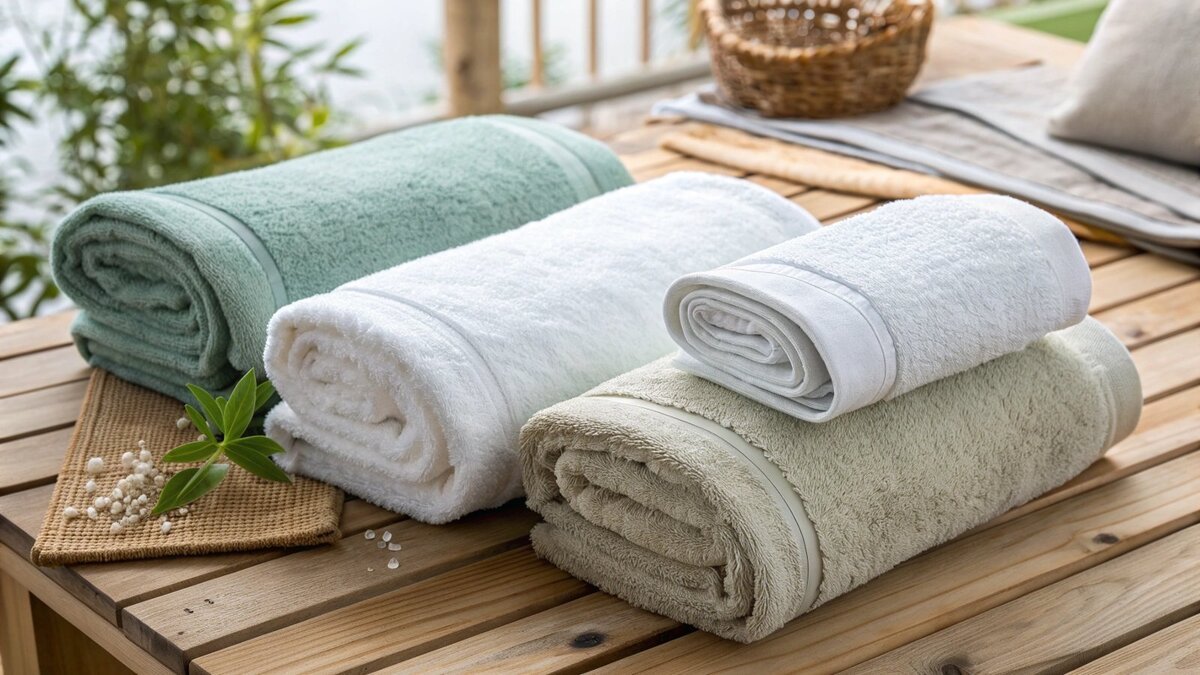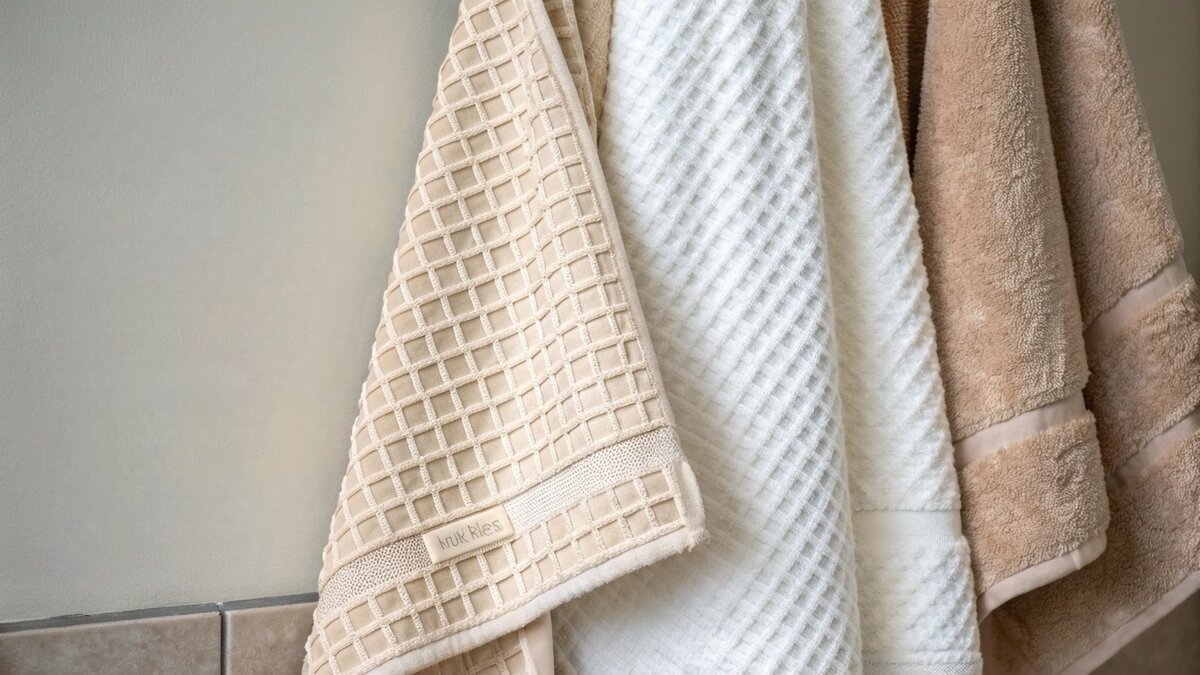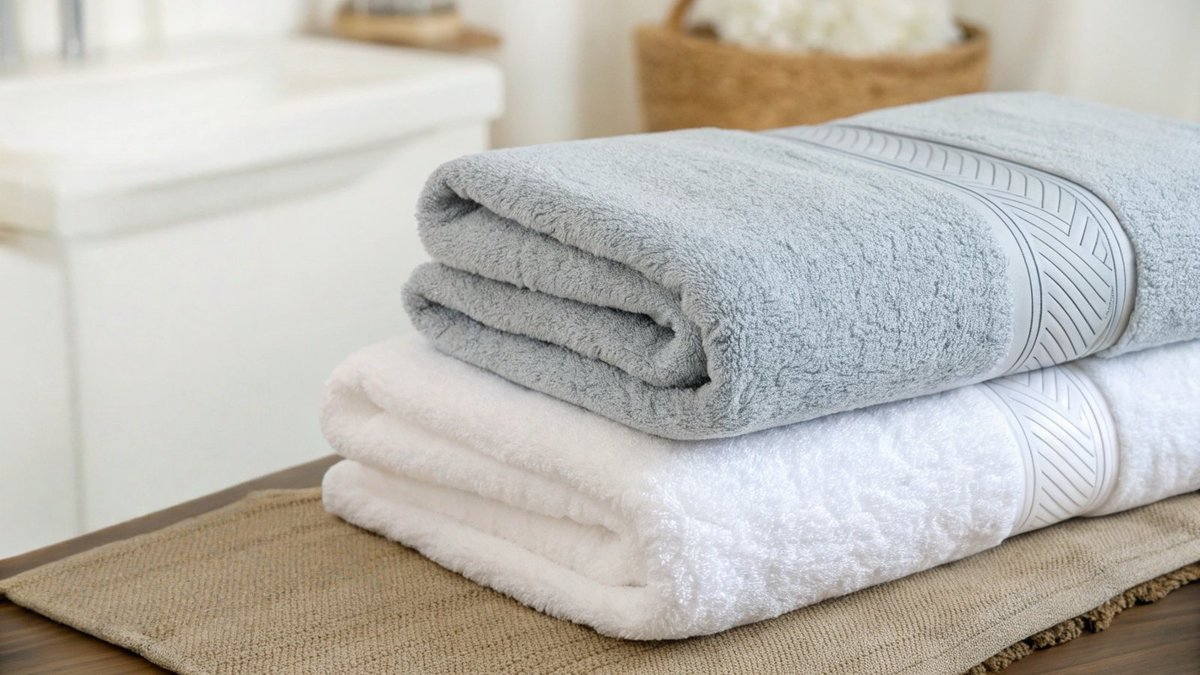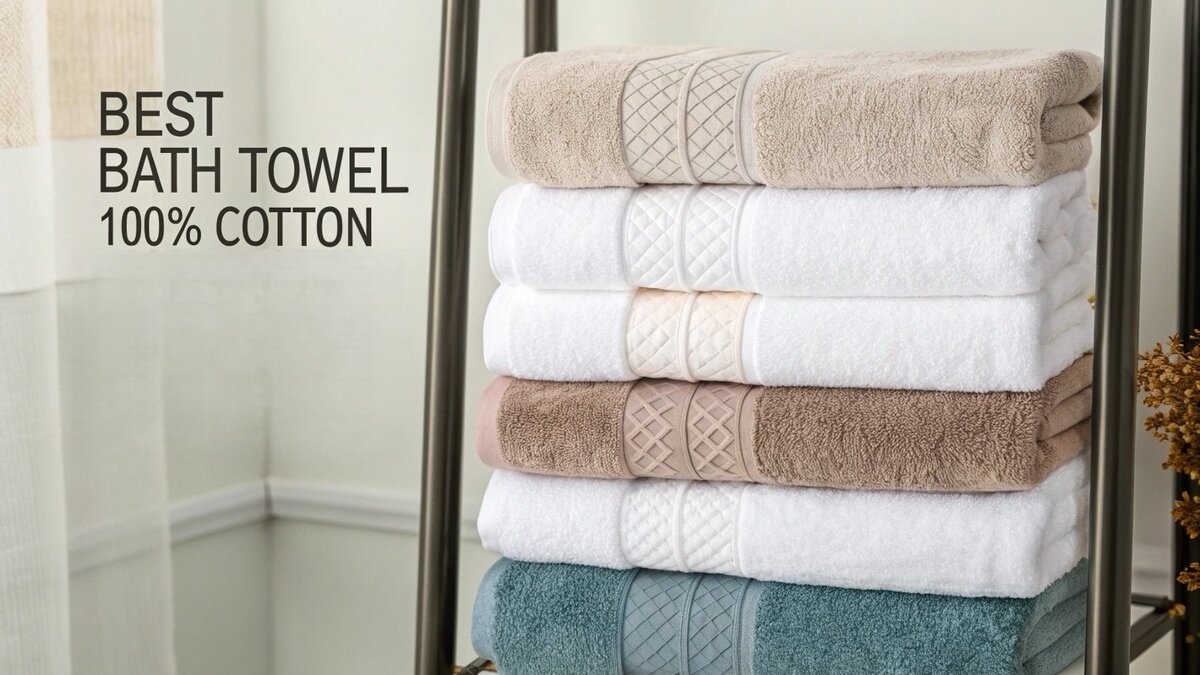Struggling to choose the right towel material? The options feel endless and confusing. I’ll help you pick the perfect fabric for your brand or home.
Towels are mainly made from absorbent fabrics. Cotton is the most popular, but you’ll also find towels made from bamboo, microfiber, and linen. Each material offers different levels of softness, absorbency, and durability, so the best choice depends on what you need the towel for.
Choosing the right towel material can feel overwhelming. It’s a question I get all the time from brands trying to create the perfect product for their customers. The material impacts everything from how the towel feels to how long it lasts. Let’s break down the common options so you can make an informed decision for your brand or home. We’ll explore the specifics of each fabric and help you understand what makes a great towel.
What material is a towel made of?
Confused by terms like cotton, bamboo, and microfiber? It’s hard to know which is best. I’ll clarify the most common towel materials for you.
Towels are made from various materials, each with unique benefits. Cotton is king for its softness and absorbency. Microfiber is great for its quick-drying ability, while bamboo is known for being eco-friendly and antibacterial. Linen is another option, valued for its durability and classic look.
When I first started in this industry, I thought all towels were just towels. But I quickly learned that the base material is the most important decision a brand makes. It dictates performance, price, and customer perception. A hotel buyer needs durability, while a spa focuses on luxury. Let’s look at the main players in the market. Each has its own strengths.
Common Towel Materials
- Cotton: The industry standard. It’s natural, absorbent, and soft.
- Bamboo: A sustainable choice. It’s naturally antimicrobial and very soft.
- Microfiber: A synthetic option. It’s incredibly light and dries super fast.
- Linen: A traditional fabric. It gets softer with every wash and is very durable.
Here’s a simple comparison to help you see the differences clearly.
| Material | Key Feature | Best For |
|---|---|---|
| Cotton | High Absorbency | Everyday use, hotels, home textiles |
| Bamboo | Eco-Friendly | Spas, eco-conscious brands, baby towels |
| Microfiber | Quick-Drying | Gym, travel, cleaning |
| Linen | High Durability | Kitchen towels, premium guest towels |
What kind of fabric do you use for towels?
Unsure about the difference between terry cloth and waffle weave? The fabric construction matters as much as the material. Let’s explore the common towel weaves.
The most common fabric for towels is terry cloth. This is a woven fabric with long loops that absorb a lot of water. You’ll also find towels in waffle weave, which is lighter and quicker to dry, and velour, which has a smooth, luxurious feel but is less absorbent.
Here at TowelTrend, we don’t just choose a material; we specify the weave. This is a detail many new brands overlook. The weave determines the towel’s texture, weight (or GSM), and how it performs. Two towels made from the exact same cotton can feel completely different because of the weave. This is a crucial detail for any brand that wants to deliver a consistent, high-quality product.
Key Towel Weaves
- Terry Cloth: This is the classic towel fabric. The loops are what make it so absorbent. The longer and denser the loops, the more water it can hold. Most bath towels are made from terry cloth.
- Waffle Weave: This weave has a distinctive honeycomb texture. It’s lightweight and allows air to flow through, so it dries very quickly. It’s a popular choice for kitchen towels and spa robes.
- Velour: To make velour, we shear the tops of the terry loops on one side. This creates a very soft, plush, velvety surface. It feels luxurious but is less absorbent than a standard terry finish. We often use it for beach towels where one side is for printing a design.
Should towels be 100% cotton?
Seeing "cotton blend" on the label and wondering if it’s a good thing? It’s a common trick to lower costs. I’ll explain why 100% cotton is usually better.
For most uses, especially bath towels, 100% cotton is the best choice. It offers superior absorbency, softness, and durability compared to cotton blends. Blends with synthetic fibers like polyester might dry faster but are less absorbent and can feel scratchy over time.
I often get this question from clients trying to hit a specific price point. They’ll see a cheaper ‘cotton blend’ option from another supplier and wonder if it’s worth it. My answer is almost always no, especially for products where performance matters. Synthetic fibers like polyester don’t absorb water; they repel it. Mixing them into cotton reduces the towel’s primary function. Over time, those synthetic fibers also break down differently than cotton fibers, which can lead to pilling and a rough texture. A 100% cotton towel, on the other hand, often gets softer with each wash. For a brand building a reputation for quality, sticking with 100% cotton is a much safer long-term strategy.
| Feature | 100% Cotton | Cotton Blend (e.g., with Polyester) |
|---|---|---|
| Absorbency | Excellent | Lower |
| Softness | Very soft, improves with washing | Can feel scratchy over time |
| Durability | High, very resilient | Prone to pilling |
| Best For | Premium bath, guest, and hotel towels | Budget or quick-dry utility towels |
What material is a bath towel made of?
Want that five-star hotel feeling at home? The secret is in the bath towel material. Let me show you what luxury brands use for their bath towels.
The best bath towels are almost always made from 100% cotton. More specifically, high-quality varieties like Turkish or Egyptian cotton are preferred. Turkish cotton offers a perfect balance of softness and quick-drying, while Egyptian cotton is known for its incredible plushness and absorbency.
When it comes to bath towels, the expectation is luxury and performance. This is why premium cotton is the undisputed king. At TowelTrend, we guide our hotel and high-end retail clients toward two main options: Turkish cotton and Egyptian cotton. Both are types of long-staple cotton, which means the individual cotton fibers are longer than in standard cotton. Longer fibers create a stronger, smoother yarn. This results in towels that are softer, more durable, and less likely to pill.
Turkish vs. Egyptian Cotton
- Turkish Cotton: Grown in the Aegean region, this cotton has long fibers and is naturally shiny. It’s very absorbent but also dries relatively quickly. This makes it a favorite for hotels, as towels can be washed and reused faster.
- Egyptian Cotton: Grown in the Nile River Valley, this cotton has extra-long staples. It’s famous for being incredibly absorbent and creating a very plush, dense towel. It’s the peak of luxury but can take longer to dry. It’s the best choice for a high-end consumer brand.
Conclusion
Choosing the right material is key to a great towel. Cotton is a reliable choice, with Turkish and Egyptian cotton offering luxury. Consider the towel’s ultimate use to decide.

